Today, all the commercial teams on Shishapangma had 100% summit success. This includes a long list of national and age records, especially among women who have climbed all 14 peaks over 8,000 meters.
There are so many records, it’s hard to keep track! Fortunately, the expedition companies have shared their summit lists. Seven Summit Treks has even detailed the personal records of their climbers.
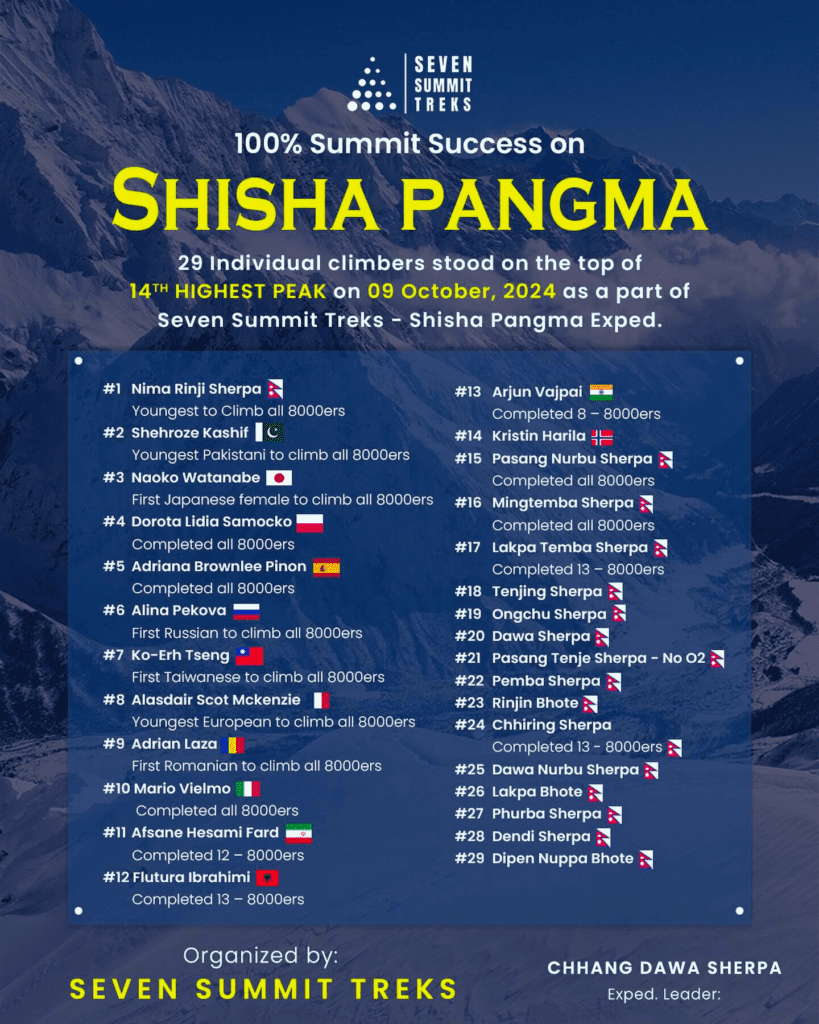
The Climbalaya team also had record-breakers, including two women. One of them, He Jing from China, climbed all 14 of the world’s highest mountains without using extra oxygen. She’s now the first Chinese and only the second woman ever to do this, following Austria’s Gerlinde Kaltenbrunner.”
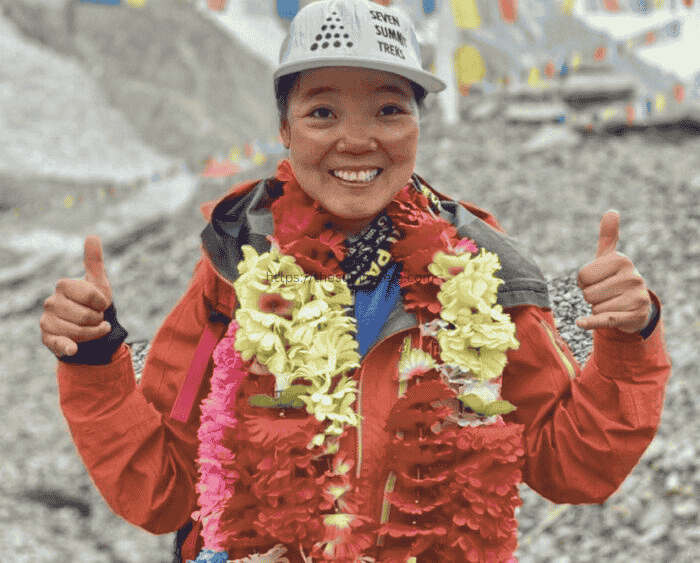
More Milestones
In the group using supplemental oxygen, Dawa Yangzum Sherpa became the first Nepali woman to climb all 14 of the world’s highest peaks. She’s from Rolwaling, just like Mingma G, who recently became the first Nepali man to summit all 14 peaks without extra oxygen. Dawa Yangzum climbed alongside Mingma Tenzing Sherpa, a certified IFMGA guide, who also completed his 14-peak challenge on ShishaPangma.
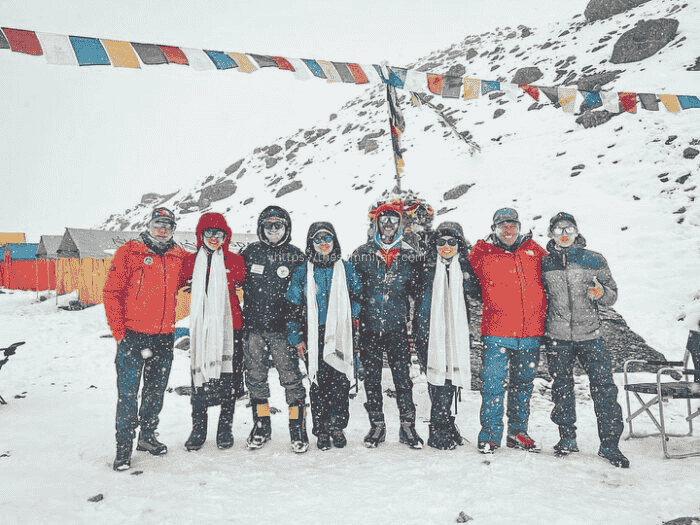
Their team also included Bharath Thammineni from India, Da Chhere Sherpa, Ngima Nurbu Sherpa, and Anna Pfaff from the U.S. What’s remarkable about Pfaff is that she returned to high-altitude climbing after losing six toes to frostbite on Mt. Huntington in Alaska. Last year, she made her comeback on Kyajo Ri.”
Strategy and Oxygen Use
The Seven Summit Treks team, along with others, started their summit push from what climber Uta Ibrahimi calls Camp 2.5, located around 7,000 meters. Their strategy was to skip setting up a third camp to speed up the climb, which started on Monday. The weather forecast warns of stronger winds and snow starting tomorrow.
Almost all climbers who reached the summit today made it back to Advanced Base Camp, with personal sherpas helping them along the way. They followed a variation of the route led by Imagine Nepal, using the trail and ropes fixed by earlier climbers.
Two climbers, Adriana Brownlee and Mario Vielmo, made the climb without using supplemental oxygen. Vielmo, unlike most, stopped at Camp 2 for the night and plans to reach Base Camp tomorrow.
Interestingly, despite rules from the China-Tibet Mountaineering Association banning climbs without oxygen at the start of the season, it seems these regulations were not enforced. There’s no word on whether the rules have changed, but Seven Summit Treks thanked the association in their summit report for their support and coordination.”
A ‘Historic Day’?
Adriana Brownlee became the first UK woman to summit all 14 peaks over 8,000 meters. Dorota Samocko was the first Polish woman, Alina Pekova the first Russian woman, and Naoko Watanabe the first Japanese woman to achieve this. (A few days earlier, Tracee Metcalfe became the first U.S. woman.)
Grace Tseng from Taiwan also completed her 8,000-meter climbs, making her the first Taiwanese person to do so. Despite some controversy surrounding her previous climbs, both The Himalayan Database and 8000ers.com have recognized her 2022 summit on Manaslu.
Tseng’s Manaslu climb sparked debate, as she claimed a highly disputed speed record, and her no-oxygen ascent of K2 was widely questioned. There were also doubts about whether she reached the true summit of Kangchenjunga on her first attempt, so she climbed it again to clear the record.
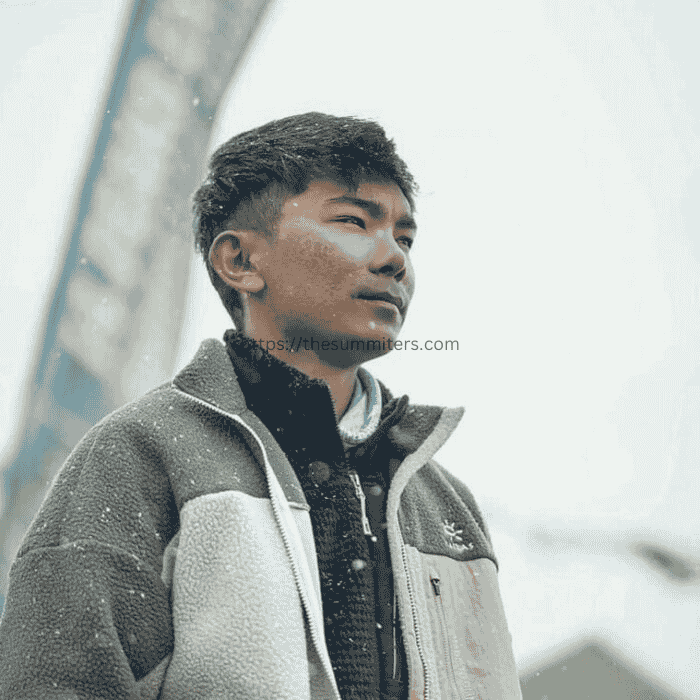
While these feats are being marketed as ‘historic,’ we should remember they are different from the groundbreaking achievements of climbers like Alison Hargreaves, Wanda Rutkiewicz, Ekaterina Ivanova, and Junko Tabei, whose accomplishments set a higher bar in mountaineering history.”
Age Records
Adriana Brownlee has now become the youngest woman to complete all 14 of the world’s 8,000-meter peaks, representing both the UK and Spain. Nima Rinji Sherpa, son of Tashi Lakpa Sherpa (CEO of Seven Summit Treks and 14 Peaks Expeditions), set a new record as the youngest person overall to achieve this feat at just 18 years old. Shehroze Kashif became the youngest Pakistani to complete the climbs and the second Pakistani overall, following Sirbaz Khan by just a few days.
However, Eberhard Jurgalski from 8000ers.com, who also works with Guinness World Records, told Explorersweb that according to his research, Mario Vielmo didn’t reach the true summits of Dhaulagiri and Manaslu, and Adriana Brownlee also didn’t make it to Manaslu’s highest point.
Brownlee was on the upper slopes of Manaslu in the fall of 2021 when Mingma G established the new route to the true summit. Photographer Jackson Groves captured drone footage that clarified the location of the mountain’s highest point, which had been a source of confusion for years. At the time, Brownlee was part of Nirmal Purja’s Elite Exped team, led by Gelje Sherpa. While Mingma G and several others reached the true summit, for some reason, the rest of the Elite Exped team, including Brownlee, did not follow. We’re still waiting for more updates on Vielmo and Brownlee’s summit status.”
Not the Same
While reaching the summit is still an impressive feat and counts in the records, the way people climb today has changed the meaning of these achievements. In the past, before commercial expeditions became common, climbing these mountains was an uncertain and self-reliant challenge, making summits rare and truly remarkable. Now, it’s often more of a personal athletic goal, with a lot more support that increases safety and the chances of success.
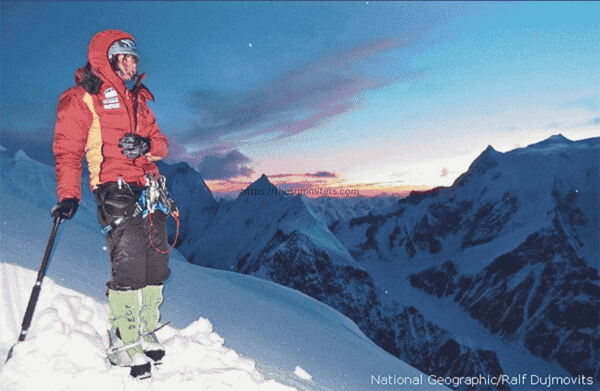
Guides and expedition leaders take care of the risks and make important decisions for clients who often have little experience. Even climbers who go without supplemental oxygen usually have sherpas helping them with everything—from melting snow for water to adjusting their gear. In many cases, sherpas even carry backup oxygen in case something goes wrong.
Too Many Climbers
With so many climbers each season, it’s becoming harder to verify all the summit claims. There are simply too many to track. The Himalayan Database recently announced that they will stop interviewing every climber who summits an 8,000-meter peak. Instead, they will only focus on teams that climb off-season or use less common routes. For the rest, they’ll rely on the summit certificates provided by Nepalese authorities, which are often based on lists from commercial operators. These operators typically don’t check their clients’ claims very closely.
From a reporter’s perspective, climbing the world’s highest peaks is still an amazing personal experience and a booming business. However, climbs on the standard routes with guided teams are becoming less newsworthy. It won’t be long before these guided 8,000-meter climbs are seen like guided trips up popular mountains like the Matterhorn or Mont Blanc—only making headlines when something goes wrong.